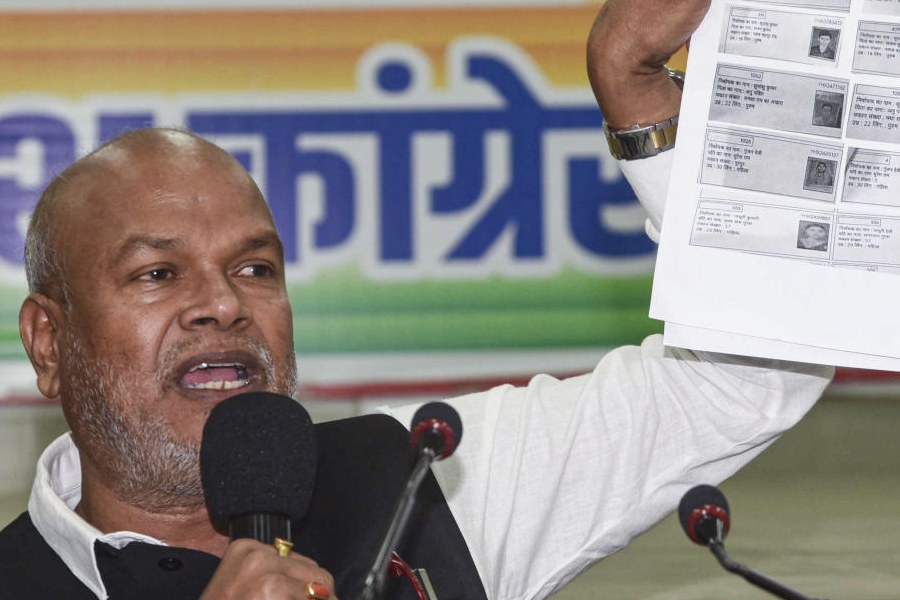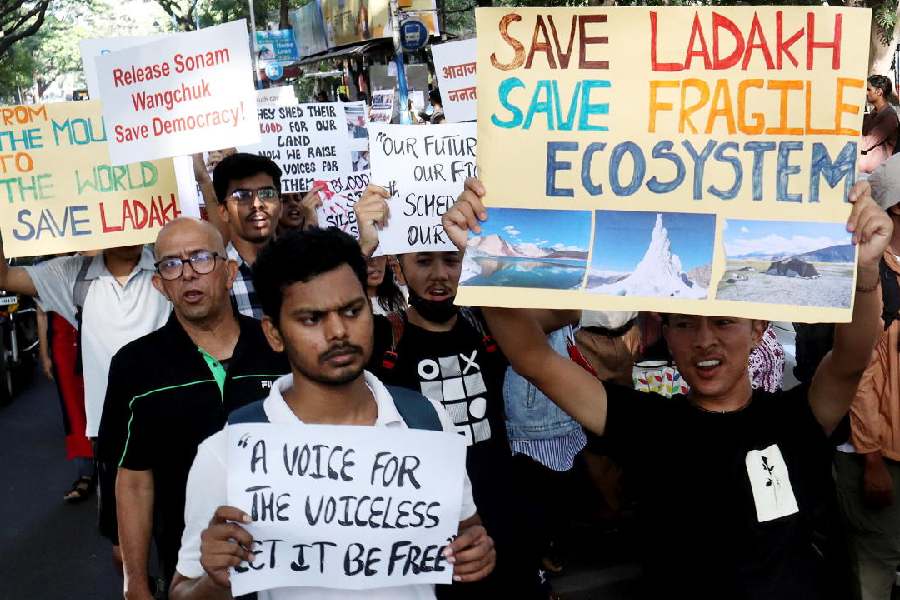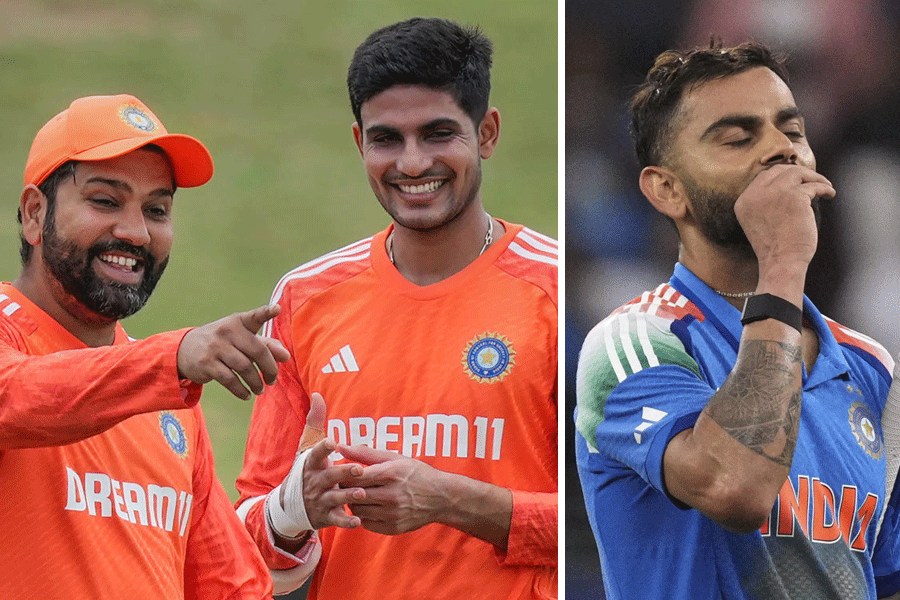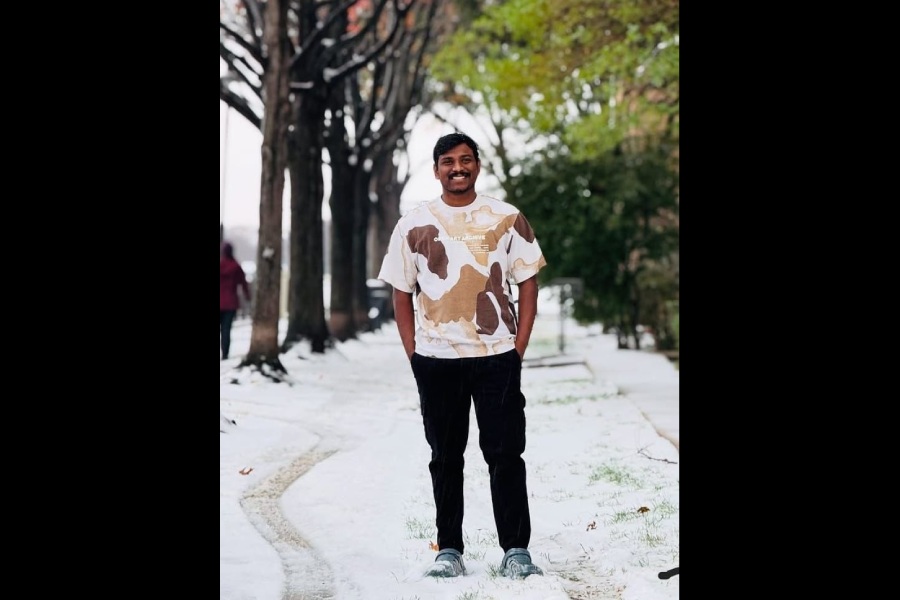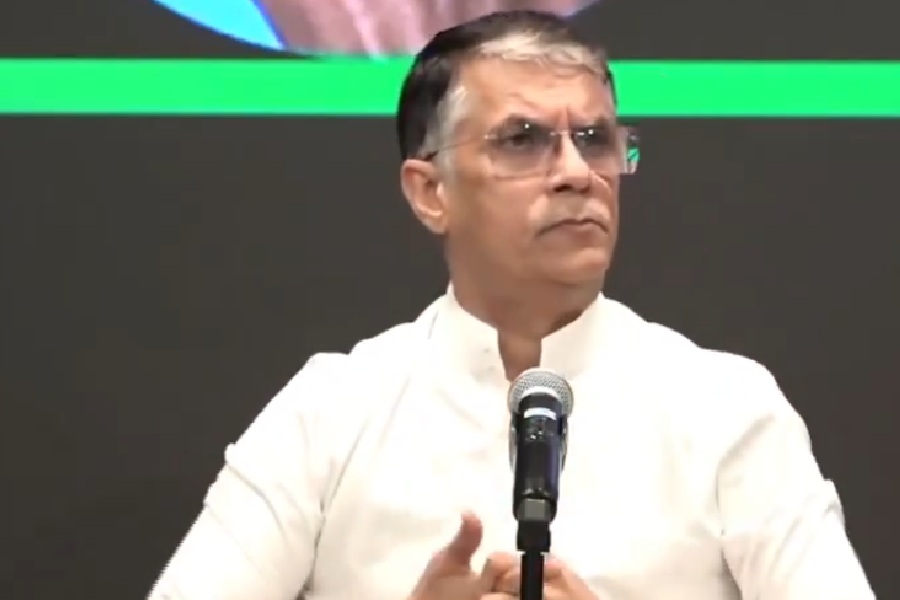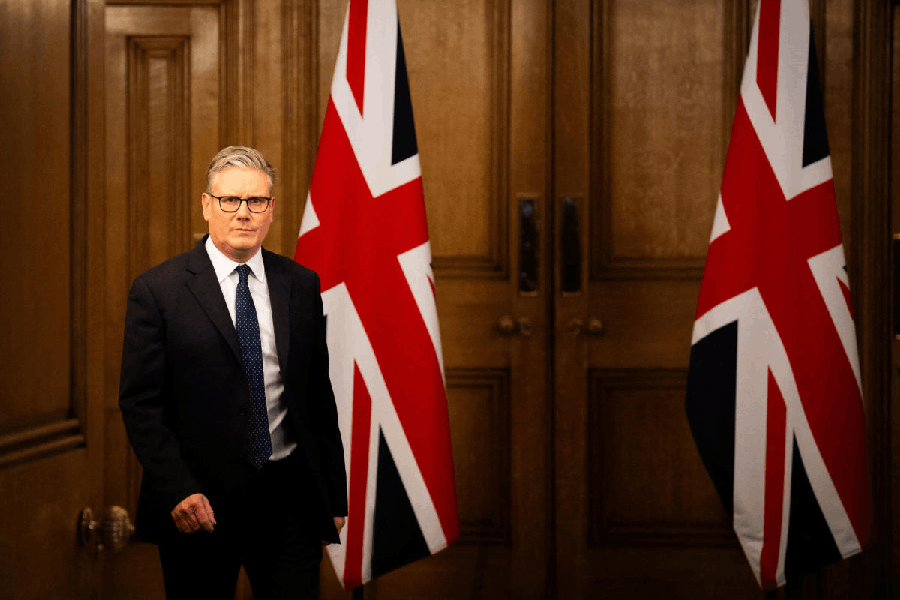 |
 |
| ON THE UPSWING: Narendra Modi at a Confederation of Indian Industry meet in Calcutta recently; (above) with L.K. Advani |
At 10.45am on June 7, Narendra Modi used his most preferred tool for instant communication with supporters and media: Twitter. The tweet — “Leaving for Goa to attend BJP National Executive Meet” — did not display his anxiety. Nor did it in any way underline the churning that was taking place in the Bharatiya Janata Party.
Four days later, after party veteran Lal Krishna Advani resigned from party posts and then was persuaded not to, Modi tweeted again: “I wholeheartedly welcome his decision!” The curtains were rung down on this short episode in Modi’s political career when he was not sure of the final outcome and played a game of brinkmanship.
Between his arrival in Goa and Rajnath Singh’s announcement regarding Advani’s resignation, Modi secured one of his major objectives: pushing the BJP closer towards the “splendid isolation” that it basked in during its early days when it was shunned by most parties. In the process of pushing this narrative forward, Modi also managed another significant feat: polarising the BJP to an extent not witnessed for more than a decade.
“The party is sure to be recast in the coming days — in the way Modi wants it,” says BJP general secretary K.N. Govindacharya.
The anointment of Modi as chairman of the party’s campaign committee for the Lok Sabha polls is likely to impact not just equations within the BJP but also the canvas of Indian politics. Playing the role of master polariser, Modi has sliced through both the BJP and the National Democratic Alliance by forcing the hand of others to appoint him to the high-profile post. The NDA is coming apart at the seams, but Modi is not troubled by that. In fact, he has further consolidated his hold on his core constituency that is willing to sacrifice consensus building within a messy coalition at the altar of a decisive and authoritarian leader.
Life has indeed come a full circle for Modi. Eleven years ago the BJP was witness to such a vertical division. Back in 2002, that drama was also enacted in Goa and the occasion was again the national executive meeting. Ironically, while Advani was Modi’s main defender then, this time he was the lead crusader against. This alone explains why at the end of this round it is Modi who wears the jaguar’s smile.
But it’s not been easy. “It would be very surprising if a formal announcement is made,” a close Modi loyalist told this writer before the leaders headed for Goa, referring to Modi’s elevation. Why then was he going to Goa, if he was to return empty-handed? “He has to fight from within — there is nothing to gain by opting out of the decision-making process,” the loyalist replied.
There has been a system in Modi’s ascendance since the Gujarat Assembly elections last December. Initially, he sided with leaders in the Sangh Parivar who were gunning for Nitin Gadkari. When his position became untenable, Modi plugged for Rajnath Singh, among other names that cropped up as possible BJP presidents.
The appointment of Amit Shah as general secretary was another indication that the wind was blowing in Modi’s favour and that the leadership of the RSS and BJP was no longer apologetic about propping up hardliners from Gujarat. “Giving Shah charge of Uttar Pradesh was actually politically provocative,” says a source.
Shah is on judicial bail in a case relating to kidnapping and murder. But despite closing in on the vantage position, Modi was getting impatient because no categorical announcement seemed to be on the anvil in the run-up to the Goa conference. This is when he stirred up his well-wishers within the RSS. A source explains that from March several senior RSS leaders who attended regular officer training camps — martial drills that the organisation conducts for its cadre — reported that the “groundswell of support within the RSS for Modi was huge”.
A few days prior to the Goa meeting, senior RSS leaders began deliberating as to whether the time was ripe for taking a calculated risk by elevating Modi further. It was contended that if any dissension surfaced within the BJP and if the NDA broke up, leading to a recasting of political forces, the developments would happen well before the general elections. The BJP, the RSS leaders agreed, would have time to evolve a strategy. The final decision, however, was left to Sarsanghchalak Mohan Bhagwat, who eventually communicated to Rajnath Singh that it was time to bite the bullet.
The core issue of the debate now is how aggressively the BJP should adopt its principle of Hindutva. Should it highlight the benign form that was the hallmark of the Atal Bihari Vajpayee era and which Advani now wishes to continue with, or advocate the angry, hostile face of Modi which he bared in 2002? Modi argues in favour of the latter and finds support within significant sections of the RSS leaders who are more at home with Modi and his politics than any toned-down version of Hindutva.
So what is Modi’s gameplan? What’s known is that he’s playing a high-risk game. He wishes to maximise gains by forcing a political polarisation. The process has already been set in motion by appointing Amit Shah as the party’s point-person in UP. If allies such as the Janata Dal (United) leave the NDA, Modi hopes to be able to create a vertical divide in Bihar. Since the two states account for 120 seats, he knows that a good yield from these states is imperative for coming to power.
Given this necessity, Modi believes that if any political reconfiguration has to take place, it must be at the earliest. This is what led to the Nagpur leadership instructing Rajnath Singh not to dither any more on Modi’s appointment. The Modi camp believes he will probably break down India’s electoral map in two main categories: states where the party needs a pre-poll alliance (Punjab and Tamil Nadu, among others) and states where the party does not require an alliance (Rajasthan, Madhya Pradesh, Chhattisgarh, Uttar Pradesh, even Bihar). There is also a third category of states where the party would be completely dependent on benevolent electoral allies (such as Odisha).
Modi remembers that in 1996, when Vajpayee first became Prime Minister, the party found no allies. “But in 1998 the situation changed — just because our seats increased, the allies also increased,” he said in an interview with this writer. “Then when the seats got reduced, the allies got reduced too. The number of allies depends on the winnability of the BJP.”
He is convinced that if allies are confident that by associating with the BJP their chances will increase, they will come to the party. “But if they think that the BJP will become a burden, then they will not join us. We will have to makes allies stronger and this can be done only when the party becomes stronger.”
How would this be done? Modi suggested that if the BJP did well in the states where it was in power, the people of other states would look at the party more favourably — as one in which people continue to repose trust.
Despite working towards a role in national politics since September 2011 when he embarked on his Sadbhavana Yatra, Modi never displayed his prime ministerial ambitions. But in a one-on-one setting, he found it tough to wriggle out when asked bluntly if he would want to be Prime Minister. “This is a very loaded question,” he replied after a brief pause.
“If someone says that I will do whatever the party tells me to do, he will get trapped. And if someone says he has no interest then also the person gets trapped. It is for writers to study and come up with their assessment. They have to judge — if the party takes such a decision will it suffer or benefit?”
What about the RSS, given its fractured ties with Modi and the fact that he has the ability to get the cadres to back him, rendering the Nagpur-body irrelevant? For the moment, the RSS faces the challenge of retaining its constituency and their hope is that eventually an individual would lose out to an organisation, strengthening the RSS’s hold over the BJP.
Modi is temperamentally not a team man and he remains most comfortable ploughing a lonely furrow. This is precisely what he is doing with the added advantage of some props in the party’s central leadership. Modi could not have asked for more from this round.


